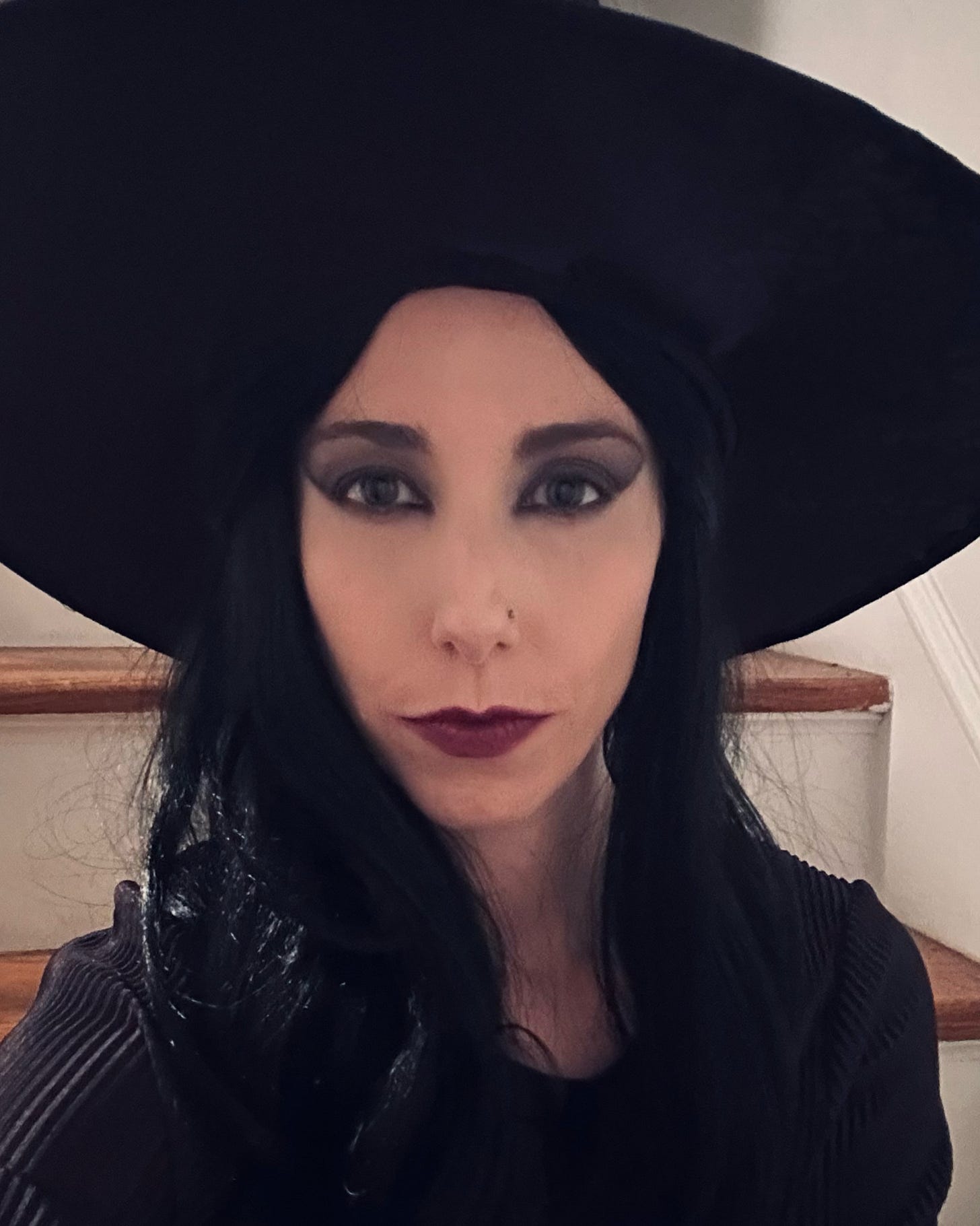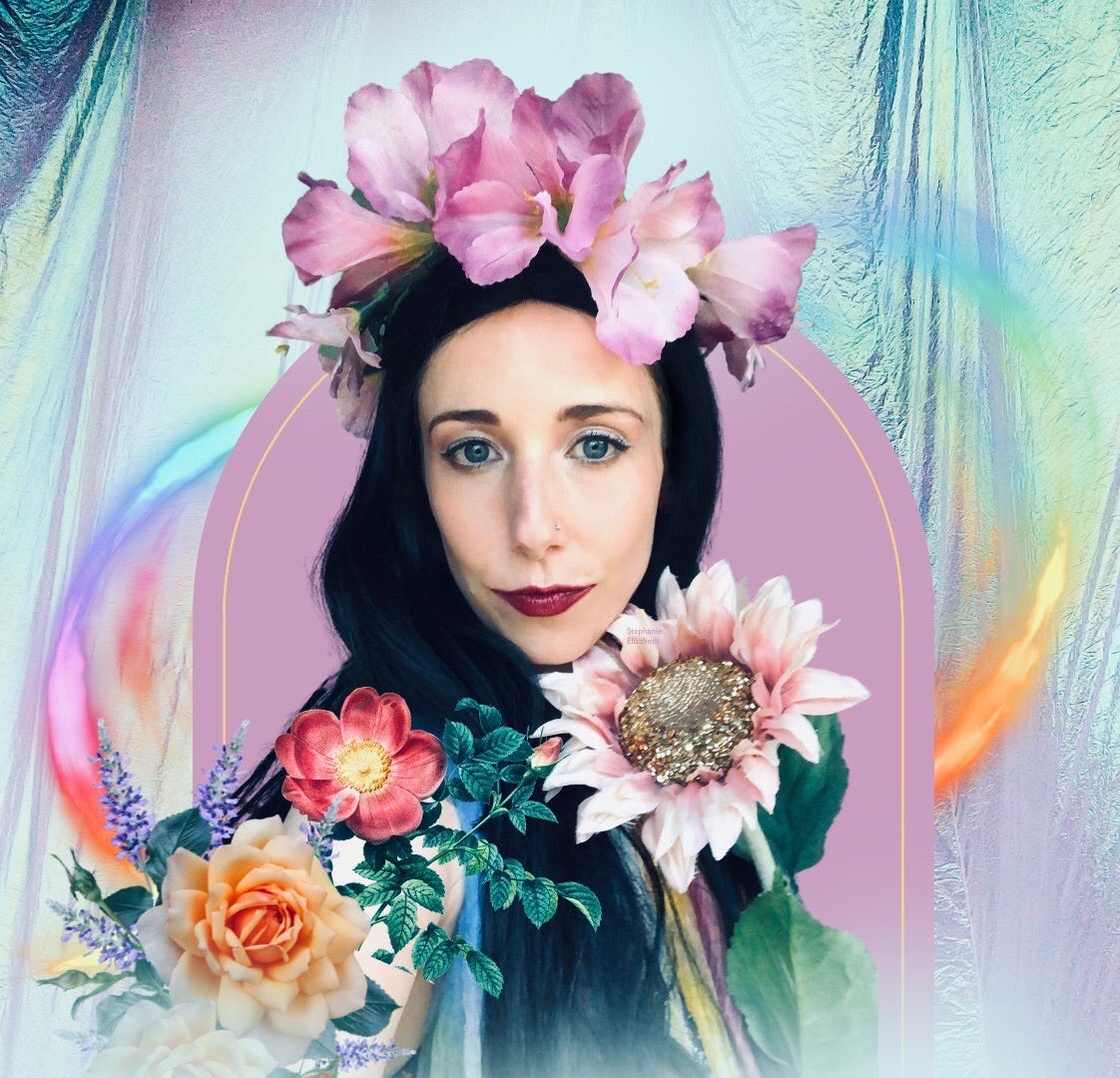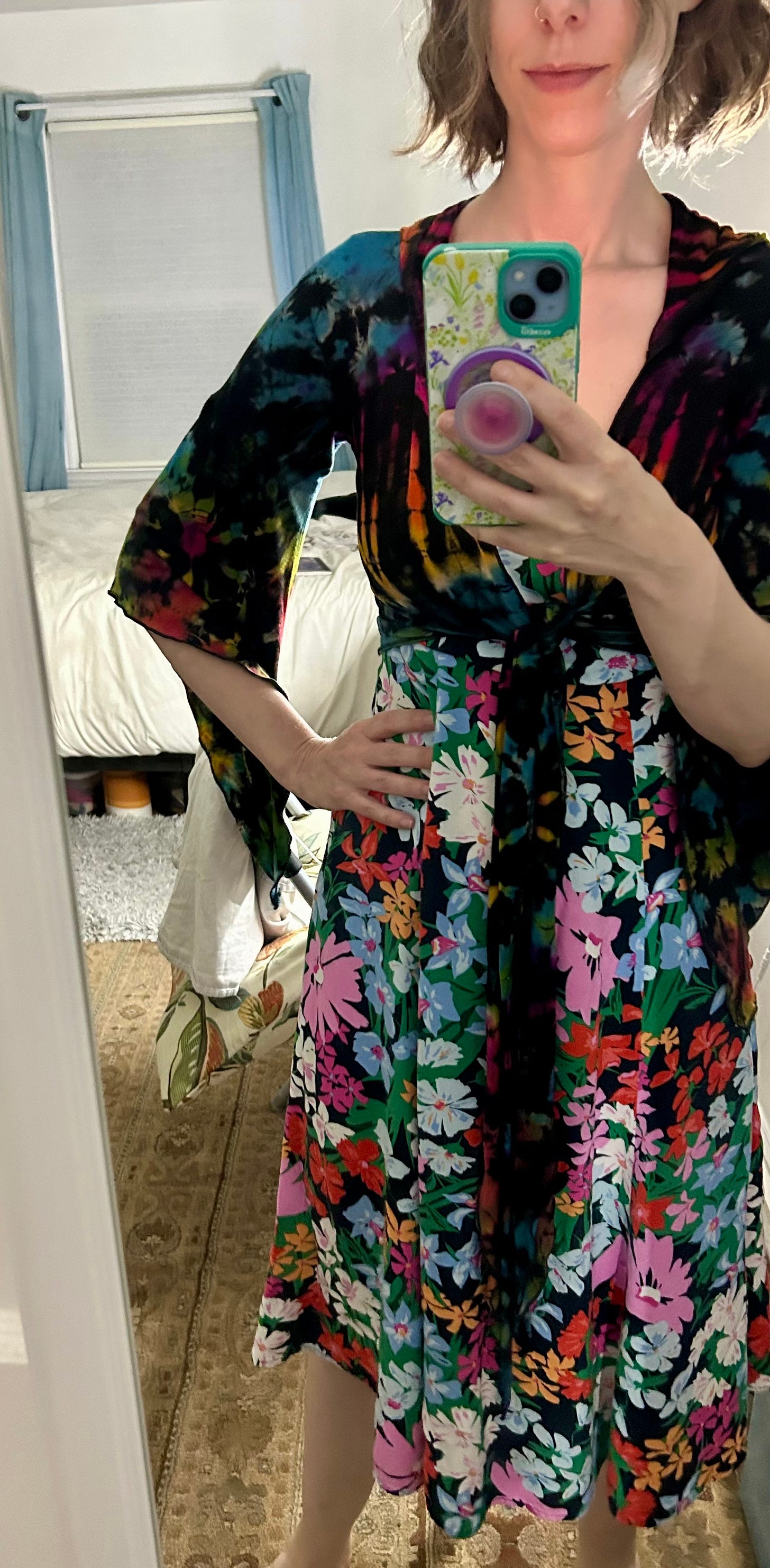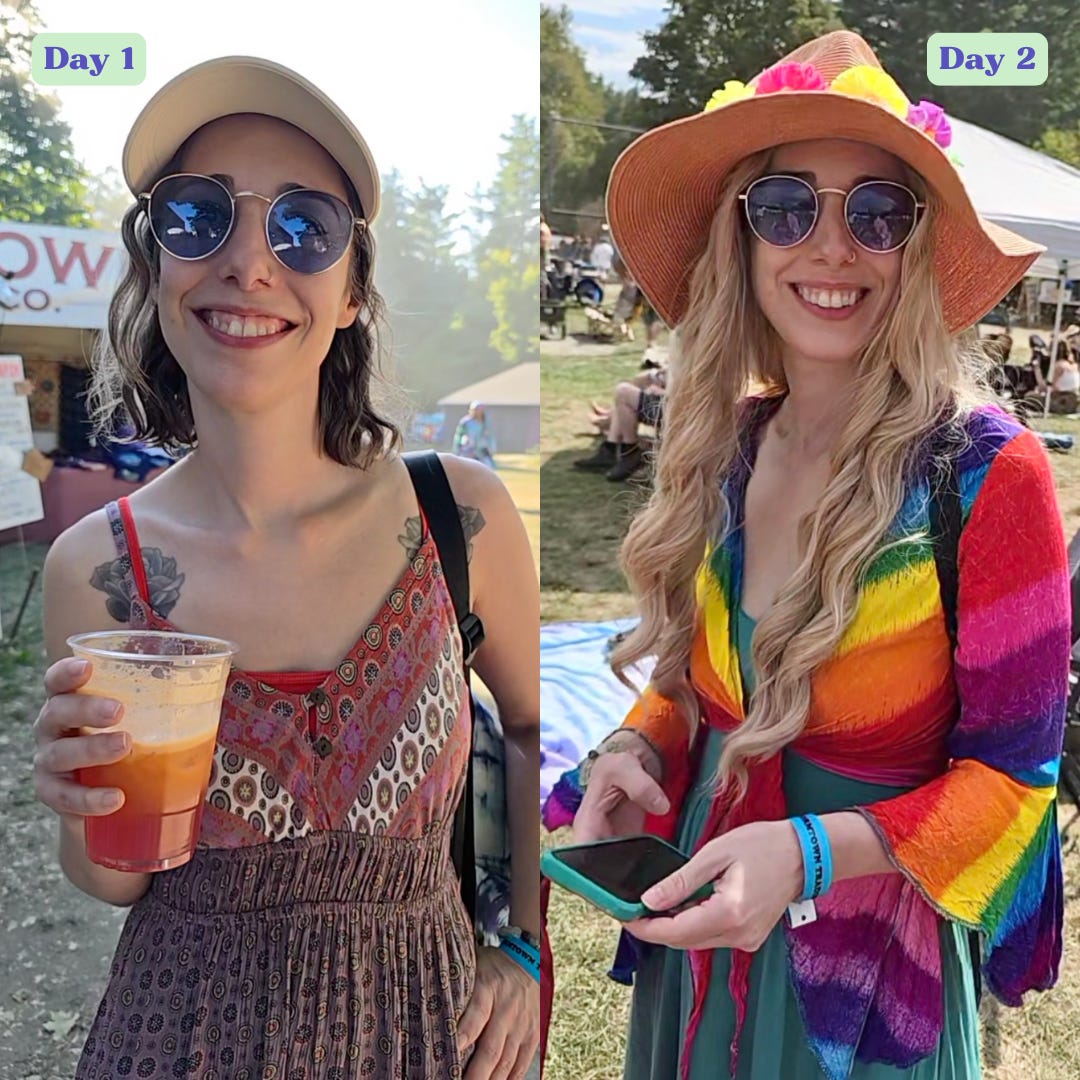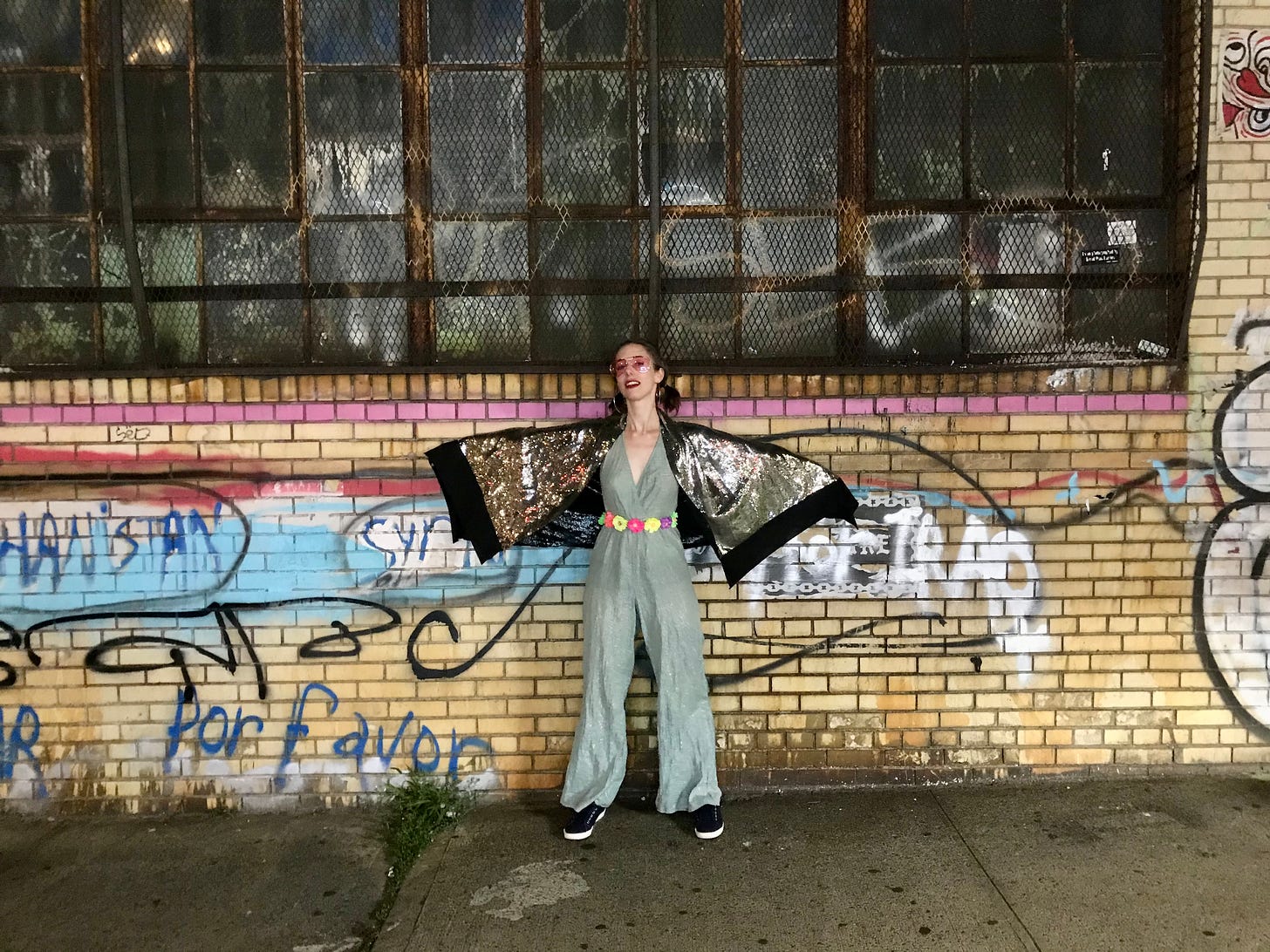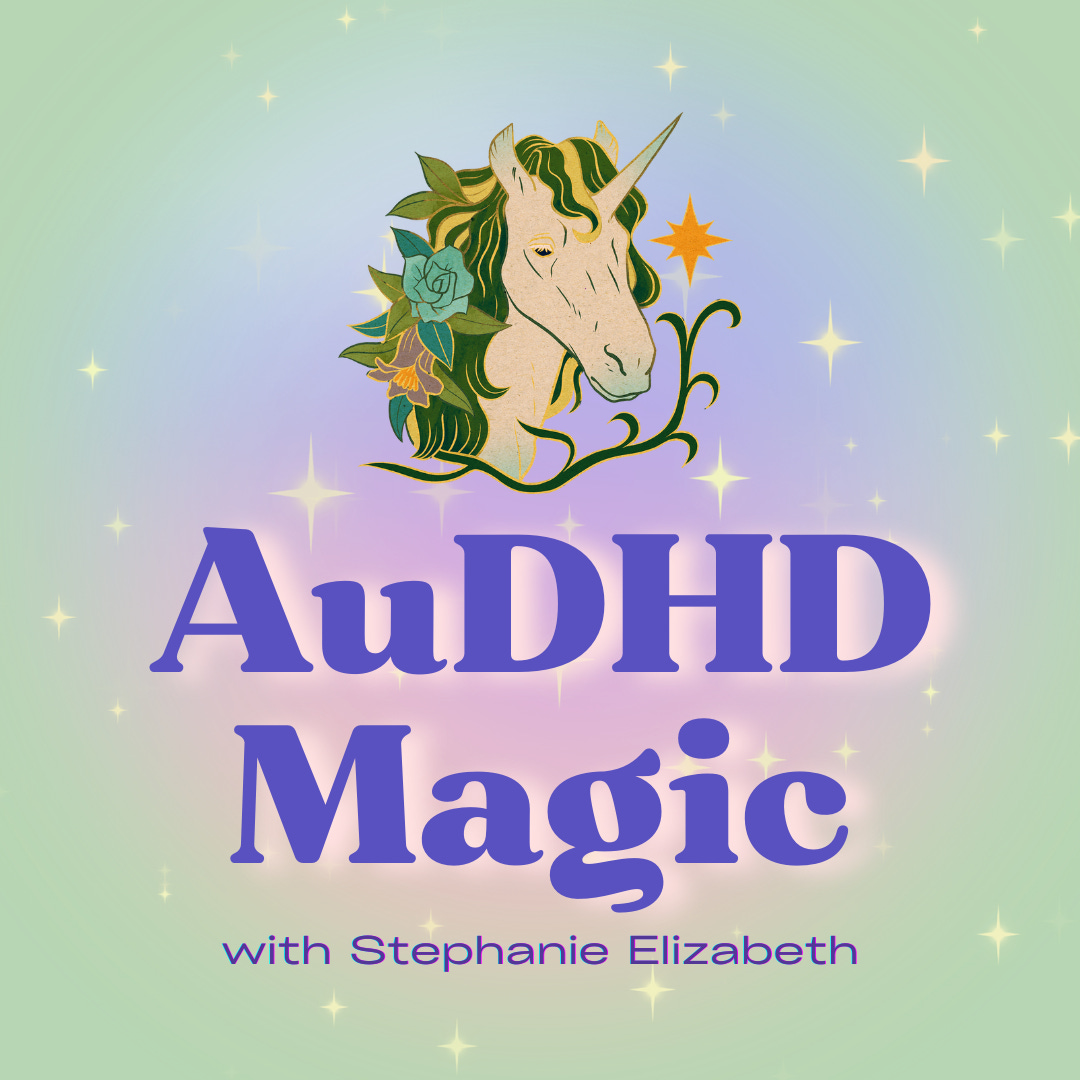Playing the fool: Cosplay as AuDHD magic
Episode 3
🦄 AuDHD Magic is a celebration of Autistic and ADHD magic, mysticism, and sensitivity, hosted by Stephanie Elizabeth!
Happy spooky season! Here’s what we’re diving into in this episode of AuDHD Magic:
Examining the hidden threads between cosplay and the AuDHD experience
How repressive cultural norms and my complicated family legacy turned me from a cosplay loving kid to a normcore adult
The family villain that unexpectedly inspired me to reclaim cosplay
A tale of two outfits, aka that time I wore a costume to a music festival and everything changed
Cosplay as an AuDHD masking hack
The complex nature and paradox of being seen as a neurodivergent person, and how cosplay connects me with my fae roots
The power of cosplay to facilitate connection and spread joy and magic
Why it’s worth the risk of (cos)playing the fool
Read the text version:
Hello, hello, and welcome back for episode three!
I’m wishing a Happy spooky season to everyone. As I’m recording this, Halloween is only a week away, so I thought, what better time to delve into cosplay, and why I’ve come to see it as a form of AuDHD magic.
I’m actually using it right now. I went and grabbed my neon flowered headband (that will appear later in this episode), along with a couple enchanted pieces of jewelry to wear as I’m writing and recording today.
I didn’t realize just how much I actually had to say on this topic, until recently, when I spent a day in costume at a music festival. And if you heard episode one, I told the story about a magical moment I had that day that really helped me get this podcast launched amidst a lot of self doubt that was coming up.
My experience that day was so illuminating, and I’ve had some great personal revelations about the power of cosplay. So today, I’m going to be sharing some of that: the stories, thoughts, interconnecting threads on cosplay as AuDHD magic.
My cosplay story begins, of course, in childhood. Halloween has always been my favorite holiday, and I loved spooky stuff, even as a little one. I guess I’ve always been drawn to the paranormal. It’s probably the Scorpio South Node in me, but it was also because I got to dress up in costume when it was Halloween. Back then, I really only wanted to be something scary for Halloween—no Disney princesses. At age five, I accessorized my basic witch costume with a plastic skull on a stick.
I also loved to play dress up at preschool, at the local children’s museum and in the living room, where I would put on impromptu performances for my family with a magic wand and an old fashioned purple satin dress gifted by my grandmother. Some of the costumes were improvised, like when my sibling and I played figure skaters, scooting across the floor in sock feet and tutus that we fashioned from plastic grocery bags.
Back then, I wasn’t afraid to be seen playing and having fun, but as I grew up, my relationship to cosplay and self expression became much more complicated. In middle school, I began to be self-conscious, and by high school, I started trying to keep a lower profile, because attracting attention could mean attracting the wrong kind of attention and making myself a target for bullying.
Still, I had a colorful personal style through my college years, but by my mid 20s, I was fully norm cored as I dressed for corporate office culture. By then, I had understood that as an adult, you’re “too old” to wear fun outfits and play dress up. It’s not cute. It’s a weird hobby. It’s a guilty pleasure, it’s a foolish embarrassment. People call you childish, cringe, silly, crazy, maybe even dangerous, if you dare to flout gender norms in your self-expression.
Of course, this is the type of criticism that’s often lodged at neurodivergent and queer folks and our joyful hobbies. (Side note, a ton of neurodivergent folks are queer.) And in case you haven’t noticed, neurodivergent and queer folks are at the forefront of cosplay and fashion typically. We are the campy theater kids and drag enthusiasts, the LARPers and Comic Con fantasy nerds, the weird artists and manic pixie dream girls dressed in arty, thrifted boho or bright, colorful attire that gets us accused, yet again, of shopping in the kids section.
Why is it bad to still like fun, colorful outfits just because you’re grown up? I don’t get it. Most adults will say they do not feel grown up inside. Yet in US culture, at least, Halloween is one of the few times that it’s socially acceptable for adults to cosplay. I mean, God forbid adults be allowed to play unless we’re getting paid to entertain someone. Sure you can play, if it’s your job.
It’s just one piece of the fucked up legacy of my colonizer ancestors, the Puritans. Yes, I am related to some of the most terrible people who ever lived. These are the same people who demonized communal celebrations and public festivities wherever they went as part of their imperial genocide campaigns and in order to maintain social control and assimilation into white supremacy. Because, of course, it goes back to that. So these norms and ideas about cosplay and what age is appropriate, they’re cultural, and like most, they’re not neutral, objective or inherently true.
I have to ask: if there was no power in cosplay, in cultivating joyful self-expression, then why would it need to be suppressed?
For me, there was also more family baggage centered on the complicated legacy of my grandmother, the one who gave me the purple gown. She was an eccentric individual, to put it mildly. In other words, she was neurodivergent. She was a lover of the arts and a charming fixture in her local arts community, and attracted many friends and admirers who swanned over her wit and her daily fashion looks.
To say she dressed with flair would be an understatement. Over decades, she had hoarded a huge wardrobe from which to fashion her outfits. They weren’t quite costumes in the sense of being a particular character, but they were definitely costume adjacent in that they were a strongly coordinated look, which often had a holiday theme.
When I was small, I didn’t really think anything of it. I remembered the process of getting dressed with her seemed very important and involved. But as I grew older, I understood that her outfits, although charming in the art world, were considered weird and embarrassing to most people, including her family members.
Everyone in the family joked about it, and this humor was one of the few coping mechanisms that we had, because my grandmother was incredibly abusive and had a fragile ego. She was born into a family of privilege and inherited wealth accumulated through their literal crimes against humanity and from this foundation in life, she lived to her mid 90s with an apparent unwillingness or inability to center anyone but herself. And she caused great pain with her behavior, which is why I eventually went no contact with her until her death.
She was the family villain, and her every attribute became tainted, including her love of fashion and her snazzy style. I internalized this notion that dressing in an eye-catching manner would make me a self-centered attention whore, just like her. On a deeper level, I learned it’s not a good thing to want to be seen.
It’s only over the last few years that I’ve been able to consider my grandmother as the complex, contradictory person that she was. She had unsupported neurodivergence and untreated mental health conditions, which was a complicated matter in an era when seeking treatment, especially as a woman, even one of privilege, could mean institutionalization, forced sedation or a lobotomy.
Underneath her performance of joie de vivre, I think she was miserable because she secretly wanted to be an artist herself, and she felt trapped into conventional family life, which is a thread I have also seen in other women who came before her in this family lineage.
She was born in 1927; she had really no choice but to get married, raise kids, be a housewife, and she performed conventionality on paper. She bought into the cult of proper white womanhood, and she tried to enforce it on others, even though she never truly fit the norm.
So she hung around art and artists, using her personal style as her form of artistic expression. And despite how awful she could be behind closed doors, upon her passing last year, I saw the outpouring of tributes, and I realized that her colorful presence truly did bring joy and inspiration to some in her community.
This is one of the reasons that as I grow increasingly fae and feral in my self liberation process, I’m reclaiming the magic of cosplay that I feel runs in my blood. Because once I lifted away the shame and judgment about my grandmother’s style, I realized that I, too, am a clothes horse with a natural tendency to wear overly matching outfits with a strong visual theme, without even meaning to. It’s not for attention. It’s because I’m having fun! I have an eye for color, and I take pleasure in creating new and vibrant pairings.
It’s something I’ve incorporated into my daily life and magical practice more and more over the last few years, because for me, it’s life-giving magic, and it’s part of my identity as an artist.
That’s what inspired me to show up in costume at the festival last month, so I wanted to share all of the insights that I had that day.
The tale of two outfits
On the first day [of the festival] I actually wore a regular outfit, because I was playing it safe with my old standby strategy of hiding. I wanted to be comfortable, which meant not standing out and not being seen.
Now this was mid-September 2025, a particularly fraught moment here in the US, and I was really on edge that day. I was extra hypervigilant as I observed the sea of hippy dippy white people around us. Yes, there were plenty of costumes, fae vibes and a fuck ton of tie dye, as well as the scent of cannabis wafting through the air. Yet I could not relax, because I was wondering who here was a Burning Man fascist? Who here was enthusiastic about RFK’s eugenics agenda?
My anxious, autistic energy translated to awkward interactions with vendors who seem to find me annoying, if they even noticed me at all. At the end of that first day, I realized that I was making myself miserable with this hyper vigilance, and I decided that I would try to let it go and have more fun on day two,
Pretty soon, a solution bubbled up from my inner guidance: wear a costume. I immediately decided I would spend day two dressed in my flower fairy finest. And right away, I felt myself relax into a sensation of joy and in anticipation.
It was a deliberate choice to shift my energy, but I had no idea just how profound the vibe shift was going to be and how much I would learn from this experience.
So I woke up on day two excited to put my outfit together. I didn’t have a plan, but instinctively grabbed just the right items to completely transform my look: a long green dress, rainbow sleeves from Pride, an old orange hat that I added a neon flower headband to for extra pizzazz (by the way, that’s the headband I’m wearing now). And the finishing touch that I used to complete the look was a long blonde fantasy wig from last year’s Halloween costume.
I hesitated on the wig for a second because I worried that it was going to be a pain in the ass to wear this all day. And to be honest, it did get a bit uncomfy by the end of the day, but it was totally worth it.
The thing is that even though I had made myself objectively less recognizable, I felt more like myself, and in this era of surveillance it was quite a winning combination, if I do say so myself.
Arriving at the festival grounds that day, I felt a whole sense of euphoria and playfulness take over, amplified by the fact that my partner stepped out of their comfort zone to also wear a fun eye catching outfit.
The joy was infectious, and I noticed that people were catching glimpses of us. Folks walking by smiled and complimented our outfits. Some even approached us specifically to say how much they loved the vibrant colors we had going on. It felt like we were welcomed into the community in a completely different way.
As I took some solo time to explore the festival, I felt myself walking taller and sporting a genuine smile instead of my usual resting bitch face. My interactions with vendors took on a completely different vibe from my experience the day before, and that’s when I began to realize that cosplay could be an amazing masking strategy and social support.
Because the costume did most of the heavy lifting for me. I felt people immediately perceived me as fun and friendly, and that was an energy they mirrored back to me. The usual awkwardness, indifference, or, let’s be honest, lowkey hostility, was not coming my way. I didn’t have to initiate the interaction or navigate small talk, because the costume was like an ice breaker, providing a ready-made inspiration for friendly conversation. People seemed eager to talk to me, exchanging pleasantries and telling me how cute my outfit was.
It wasn’t until the man handing me my sandwich paused, looked me in the eyes and said a heartfelt, “You have a wonderful day,” that I realized it wasn’t just the costume as a whole. With the wig, I was experiencing the blonde effect, and as a lifelong brunette (with a few ginger interludes), I had forgotten that blondes do have more fun.
Now this may be taboo to admit, but I think I was benefiting from an increase in pretty privilege. For a time in my early 30s, after I had a glow up, I had experienced a drastic improvement in the treatment I received everywhere I went. That time in my life made it abundantly clear to me that pretty privilege is very real. Yet as I have aged into my 40s and left my gray hair undisguised, I have faded back into quasi-invisibility. But with the wig and the outfit, I still got it.
While I was browsing vintage wares, one of the owners came up to tell me she had seen me walking by earlier, and she loved my outfit. The other owner scurried over to join in, asking, “Are you an artist? Wasn’t I talking with you last night in the line for the bathroom?” (She was not.) Later, another fae cosplayer wearing wings walked by and said to me, “you’re such a fairy!”
And I felt so seen, because the costume was amplifying my vibe. It made my inner self more legible to others, which made it easier to actually connect and attract my fellow fairies. It was an alternative to masking and a curated self-presentation that actually facilitated authentic connection, rather than a hollow performance of normalcy.
I’m still so tickled by the paradox that hiding my true appearance under a costume somehow made me more visible as who I really am. In the past, I had learned that being seen meant danger, but in this case, I felt safer because people approached me with goodwill.
It felt like a more empowering, less gatekeepy take on the adage to dress for the job you want", and in this case, it was fairy witch extraordinaire. I truly feel like I found the hack to living my best Libra life without my usual Virgo rising aura getting in the way that people seem to find oddly intimidating.
In itself, this feels like such a fae concept. In mythology, the fae are often adept at shapeshifting and glamour magic, presenting a curated appearance to deceive or manipulate unwitting humans, not unlike that daily process of masking my autistic and ADHD traits that I’ve been practicing since childhood. While I didn’t have a nefarious intent with my costume that day, I did feel like a benevolent trickster in the fae sense of the word.
At the festival, I truly understood that cosplay is not just for my own personal enjoyment, it’s a way of spreading joy and magic to others. It was very clear that I was brightening people’s day with my costume, and I think that’s a good thing. We need joy. We need fun, humor, play in this life, especially as the system tries to grind us all down into dour compliant worker bees.
Certainly there are environments where my vibrant self expression would not be welcomed, spaces where I may be seen as the crazy fool like my grandmother was. To be honest, neurodivergent folks have likely been seen as foolish for a long time, yet there have always been those who value our so-called foolishness.
Even if no one says a word, being colorfully myself also invites others to do the same, most notably my fellow neurodivergent folks, and that is something I can feel really good about, because life is hard enough as it is. We need some play. And in this case, I also inspired my partner, who got to have a positive new experience of being seen.
Was it truly just the costume that did all this, or was it the way the costume allowed me to inhabit my body differently and move through the world with my light shining? I can’t say for sure, but I’m just glad that I fooled around and found out.
Have you experienced the magic of cosplay, or ever noticed how your self expression ripples out to the people around you? If so, I’d love to hear about it in the comments, and if not, I strongly encourage you to try it out and see for yourself, because, as my friend and colleague Andréa Ranae recently said, the world desperately needs more zanies and fools.
Thank you for listening in today and until next time, take care and stay magical. 🦄
AuDHD Magic is created and produced by Stephanie Elizabeth. Our theme song is Crystal Waves by Starry Eyes.
Find more illuminating content on Stephanie's YouTube channel.
Get the free Spirit Guide Meeting Place guided meditation audio to easefully connect with your guides in your solo practice.
Hear from your guides and be in community at Spirit Hour Guided Meditation Circle, a monthly online event.
Receive private support from Stephanie: birth chart readings, akashic records readings, intuitive development training & spiritual life coaching.



